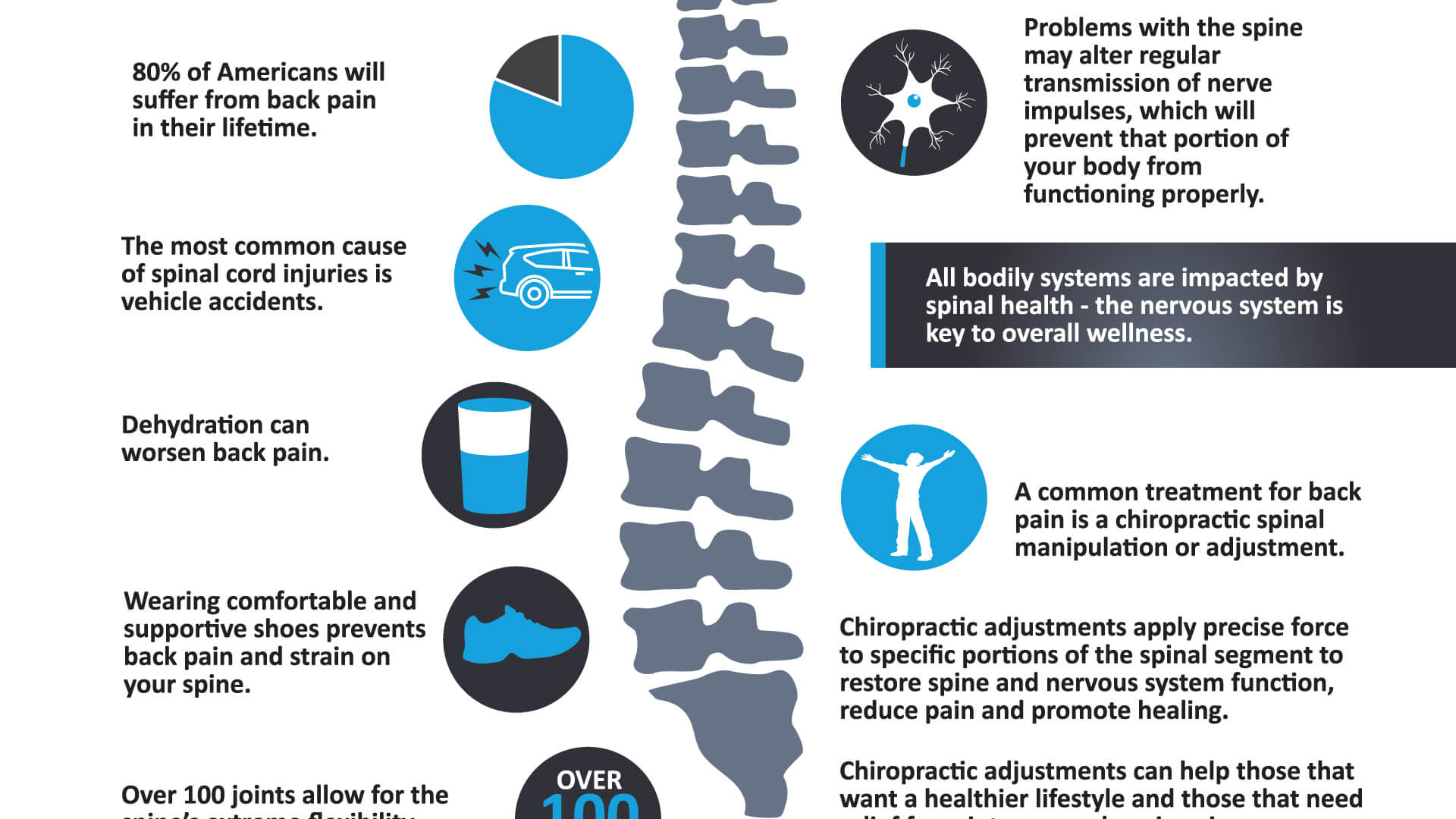The Top Daily Behavior That Add To Pain In The Back And Just How To Prevent Them
The Top Daily Behavior That Add To Pain In The Back And Just How To Prevent Them
Blog Article
Uploaded By-Carstensen Svenningsen
Maintaining correct posture and staying clear of common mistakes in everyday tasks can considerably affect your back health. From exactly how you sit at your workdesk to how you lift hefty objects, little changes can make a big difference. Picture a day without the nagging pain in the back that impedes your every relocation; the option might be easier than you assume. By making chiropractor harlem of tweaks to your day-to-day habits, you could be on your method to a pain-free existence.
Poor Pose and Sedentary Way Of Living
Poor position and an inactive way of life are 2 major contributors to pain in the back. When you slouch or inkling over while resting or standing, you placed unneeded stress on your back muscular tissues and spine. This can bring about muscle imbalances, stress, and at some point, persistent back pain. Additionally, sitting for long periods without breaks or physical activity can compromise your back muscle mass and bring about tightness and discomfort.
To fight inadequate pose, make an aware effort to rest and stand straight with your shoulders back and aligned with your ears. Remember to maintain your feet flat on the ground and prevent crossing your legs for prolonged durations.
Incorporating regular stretching and enhancing exercises into your everyday regimen can likewise help enhance your position and alleviate neck and back pain related to an inactive way of life.
Incorrect Training Techniques
Inappropriate training strategies can considerably contribute to back pain and injuries. When you raise hefty items, bear in mind to flex your knees and utilize your legs to lift, as opposed to relying on your back muscular tissues. Avoid turning your body while training and maintain the item near to your body to lower pressure on your back. It's vital to preserve a straight back and stay clear of rounding your shoulders while lifting to avoid unneeded stress on your back.
Constantly examine the weight of the item prior to lifting it. If it's too heavy, ask for aid or use tools like a dolly or cart to move it securely.
Bear in mind to take breaks during lifting tasks to give your back muscles a chance to rest and avoid overexertion. By carrying out get more info lifting techniques, you can stop pain in the back and reduce the risk of injuries, ensuring your back stays healthy and strong for the long term.
Lack of Normal Workout and Extending
An inactive lifestyle devoid of routine workout and extending can significantly contribute to pain in the back and pain. When you don't take part in exercise, your muscle mass come to be weak and inflexible, resulting in poor posture and raised stress on your back. Routine workout helps strengthen the muscles that sustain your spinal column, improving stability and minimizing the danger of pain in the back. Integrating stretching right into your routine can additionally boost versatility, stopping stiffness and pain in your back muscles.
To stay clear of neck and back pain brought on by a lack of exercise and extending, go for at least thirty minutes of moderate physical activity most days of the week. Include workouts that target your core muscle mass, as a strong core can help minimize pressure on your back.
Furthermore, take breaks to extend and move throughout the day, specifically if you have a desk work. Basic stretches like touching your toes or doing shoulder rolls can help ease tension and prevent neck and back pain. Prioritizing normal workout and extending can go a long way in maintaining a healthy back and lowering pain.
Verdict
So, remember to stay up straight, lift with your legs, and stay energetic to stop pain in the back. By making easy adjustments to your daily practices, you can prevent the discomfort and restrictions that feature pain in the back. Care for your spinal column and muscle mass by practicing excellent posture, appropriate training strategies, and normal exercise. Your back will thank you for it!
